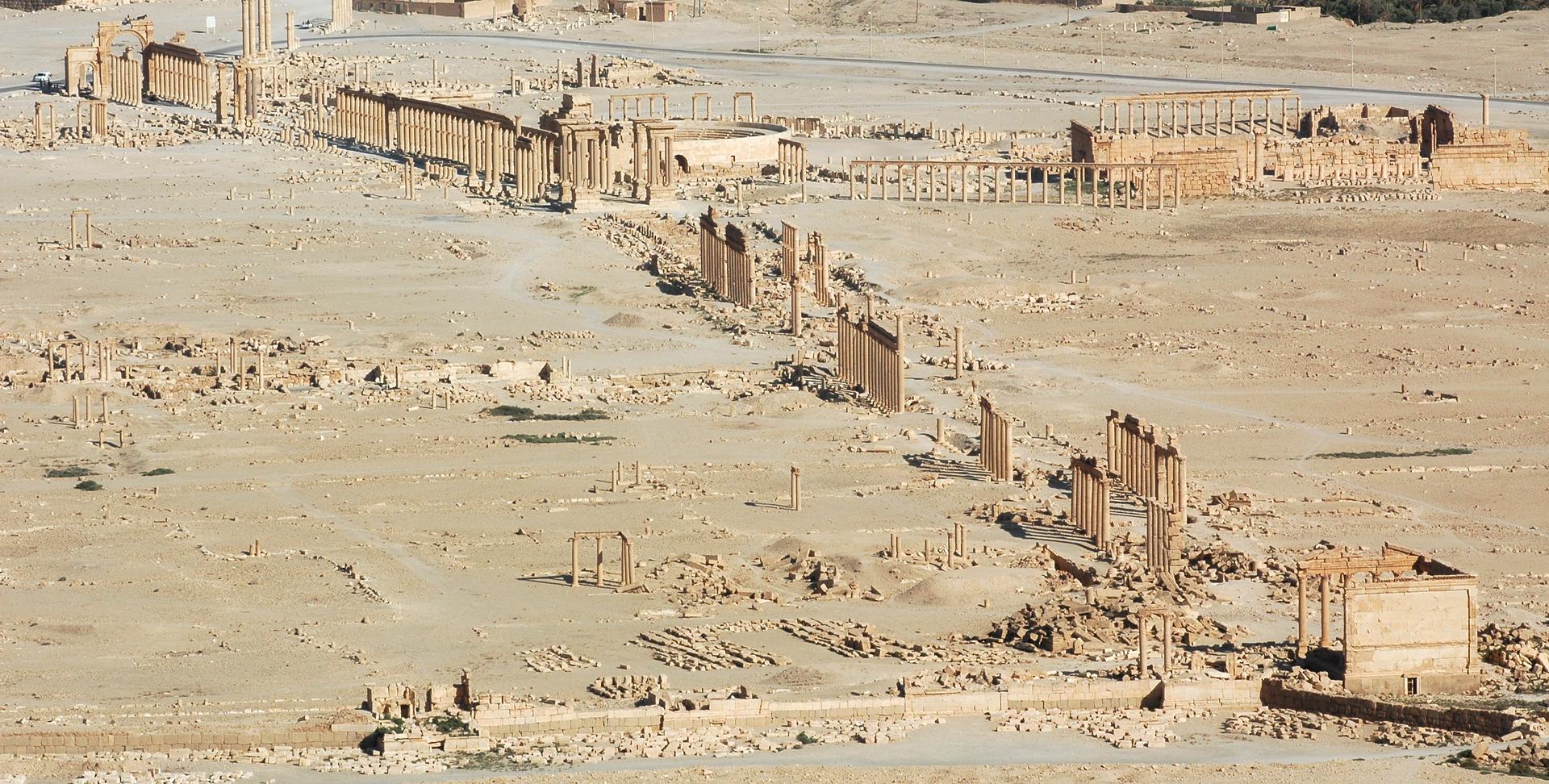What is…
Tadmor
also known as: Palmyra, Tadmur, Tammor
Hebrew: תַּדְמֹר —transliteration: Tadmor
This was city built by King Solomon “in the wilderness” (2 Chronicles 8:4), in what is now central Syria. Today it is commonly known as Palmyra, the name used by the later Greeks and Romans. There were springs, making an oasis of palm trees. Today it supports 20 different varieties of palms. Water made agriculture and herding possible.
Palmyra is overlooked by 2 mountain ranges, one north and the other south. The east side of the city is exposed to the Syrian Desert.
The city is 134 miles (215 km) northeast of the Syrian capital, Damascus.
People of Palmyra are called Palmyrenes. They spoke Palmyrene Aramaic and used Greek in commerce and diplomacy. Through ancient centuries, they worshipped many different false gods. Chief among these were 3 gods: Bel, Aglibol and Yarhibol.
During the 4th century AD many converted to Christianity, and later in the 7th century many citizens converted to Islam after their conquest by a caliphate.
In 2 Chronicles 8:14 Tadmor is mentioned in connection with Hamath-zobah. It stood in the great Syrian wilderness, 176 miles from Damascus and 130 from the Mediterranean and was the center of a vast commercial traffic with Western Asia.
It was also an important military station. (See Solomon.)
Archaeology

“Remains of ancient temples and palaces, surrounded by splendid colonnades of white marble, many of which are yet standing, and thousands of prostrate pillars, scattered over a large extent of space, attest the ancient magnificence of this city of palms, surpassing that of the renowned cities of Greece and Rome.”
The city’s visible ruins include the Temple of Bel, Temple of Bel-Shamin (aka Baal Shamin Temple), a Roman theater, a large marketplace (agora), Baths of Zanobia, a funerary temple, tower tombs, Camp of Diocletian, a decumanus road (east-west oriented) with a Arch of Triumph, a Great Tetrapylon arch, a flanking Great Colonnade, and the foundations of numerous buildings, etc. Much of the ruins were methodically destroyed by Muslim soldiers of ISIS in 2015. Damage in the Palmyra museum was also extensive. ISIS used the Roman theater to film Islamic State executions.

King James Version confusion
The King James Version of 1 Kings 9:18 eroneously uses the name “Tadmor,” whereas the Hebrew text and the Revised King James Version and other translations correctly read “Tamar,” which is a different city, far away in Judah. Solomon rebuilt Tamar in the wilderness, in the land of Judah. It was located on the southern border and toward the wilderness (compare Ezek. 47:19; 48:28).
The Legacy Standard Bible, NASB, ESV, and CSB all say Tamar, rather than Tadmor.
and Baalath and Tamar in the wilderness, in the land of Judah, —1 Kings 9:18 LSB
More information
- Who is KING SOLOMON?
- About ANCIENT SYRIA in the Bible
- Who and what is Bel?
- Who or what is Baal?
- About IDOLATRY and false gods in the Bible
- About IDOLS in the Bible
- PALM TREES in the Bible
- What is THE CITY OF PALM TREES?
 Learn about Bible archaeology
Learn about Bible archaeology
